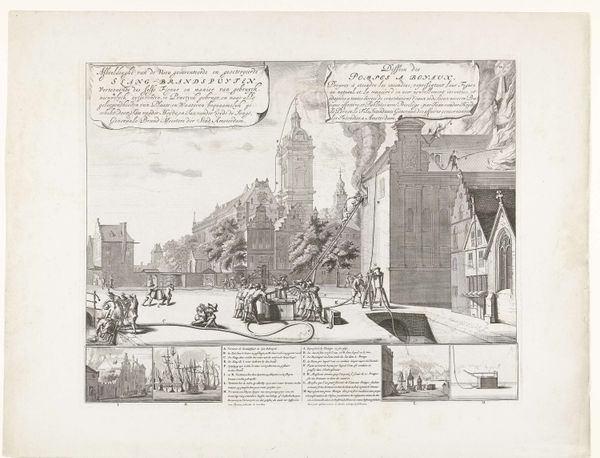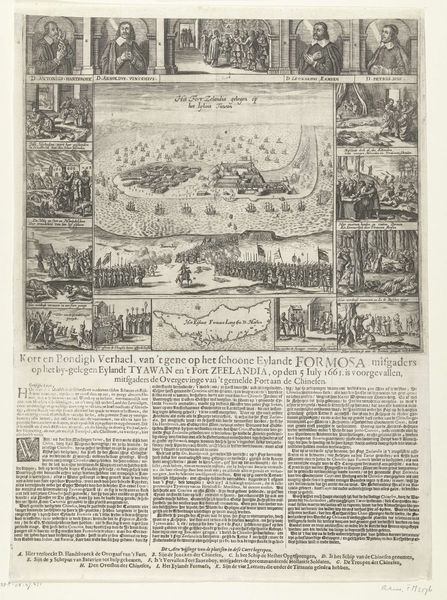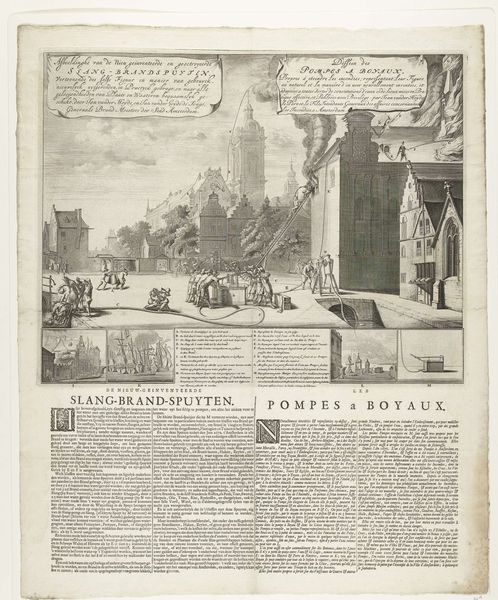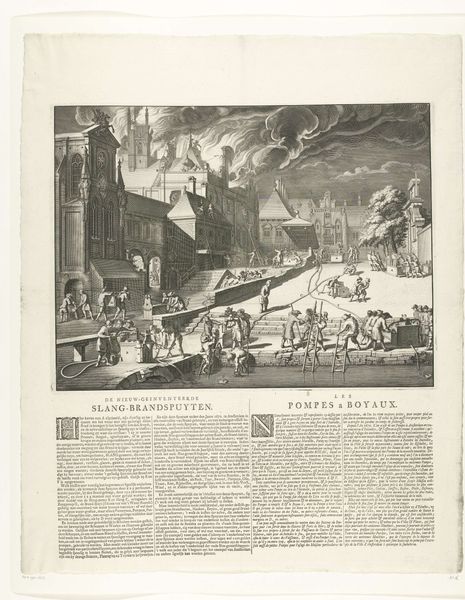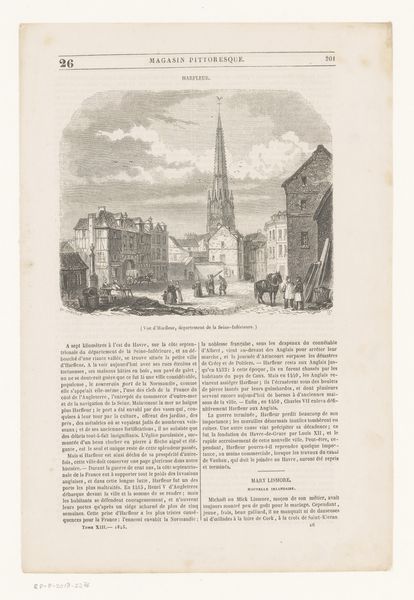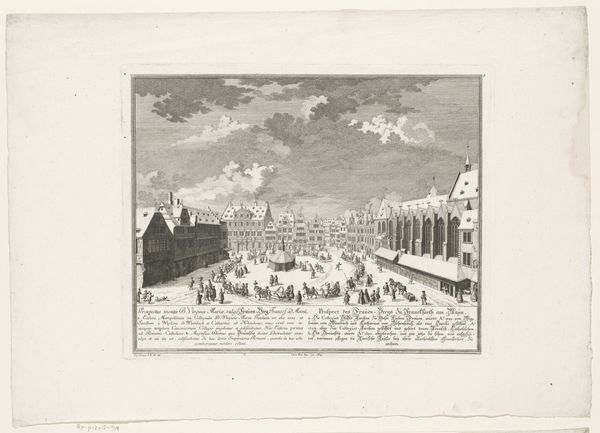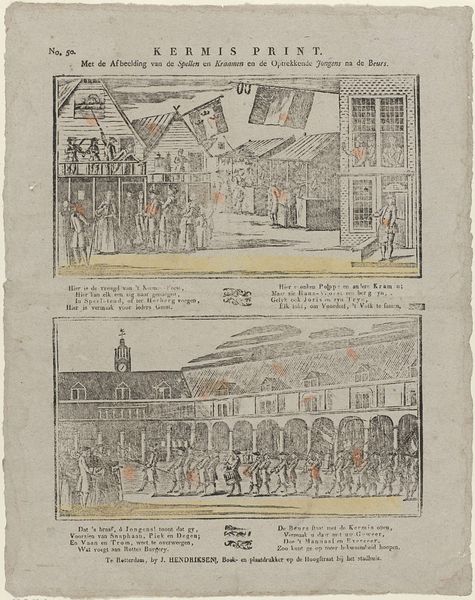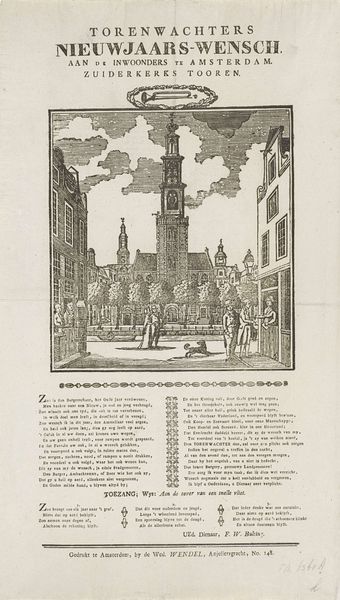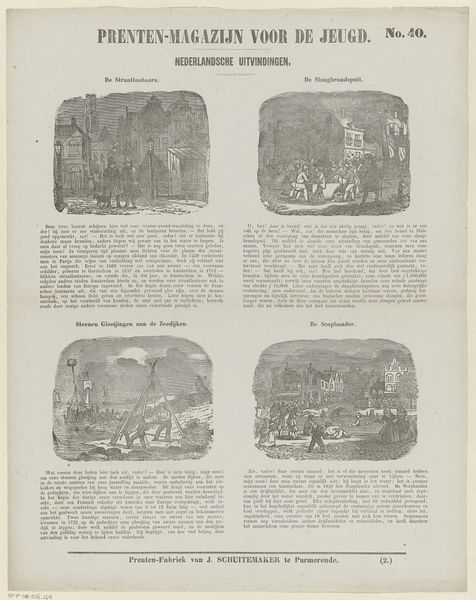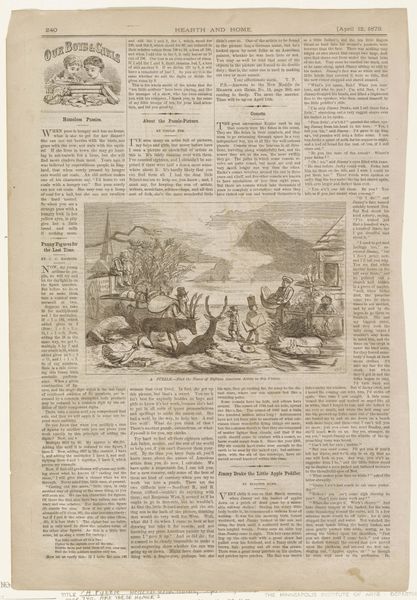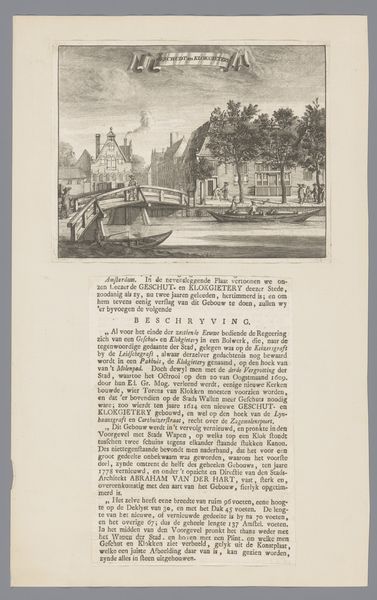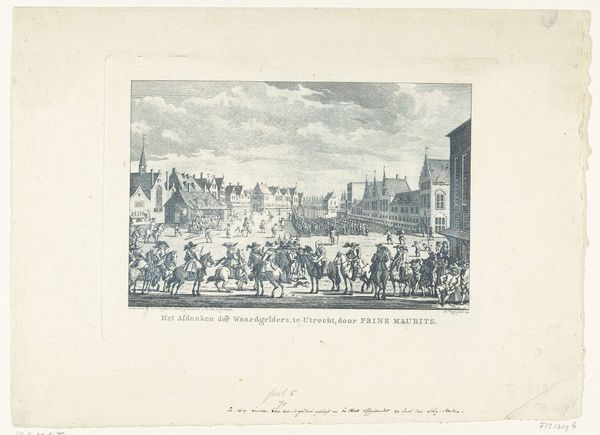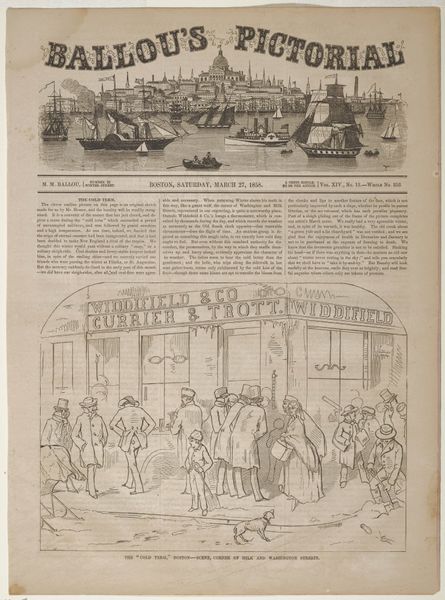
print, engraving
#
narrative-art
#
baroque
# print
#
old engraving style
#
cityscape
#
engraving
Dimensions: height 582 mm, width 470 mm
Copyright: Rijks Museum: Open Domain
Curator: This is "Toepassing van de nieuwe brandspuitslangen," or "Application of the New Fire Hoses," an engraving made between 1677 and 1699. It’s part of the Rijksmuseum’s collection, created by an anonymous artist. What strikes you about it? Editor: The scene is incredibly tense, even in the delicate lines of the engraving. The soaring buildings dwarfed by the rising smoke... It’s Baroque drama at its peak! The image feels staged. Curator: It's interesting you use the word 'staged.' The composition is deliberate; observe how the artist utilizes line to guide the eye through the various aspects of the scene: the people working the pump, the hose snaking towards the fire. These lines have an elegance almost detached from the real-world concerns of the people at work in the frame. Editor: It's all about this new technology isn't it? About process. About invention. Look how carefully the workings of the pump and hoses are rendered! You can see the labor, the human effort involved. These figures aren't just aesthetic elements—they're machine operators. Curator: Yes, and that tension between man and machine contributes to its meaning. The engraving isn't merely depicting a fire. It's presenting a society grappling with emergent technologies. Observe how the verticality of the hose rising towards the fire challenges the horizontal sprawl of the city. Editor: It makes me think about how that technology impacted social structures in Amsterdam. New inventions required new forms of labor, new forms of training. What material transformations occurred because of tools like this? Were these men specially trained? Curator: Precisely. By examining the visual rhetoric here—the emphasis on clear lines, balanced composition—we can appreciate how printmaking was evolving. Also observe how there are smaller panels below demonstrating how the equipment is handled. It operates simultaneously as artwork and documentation. Editor: The details woven into the visual framework tell us stories about labour and community, revealing systems both resilient and always susceptible to the next social force or material reality. Curator: Indeed. It demonstrates how an event becomes narrative—even art—when it's distilled through a precise, structured lens. Editor: Ultimately it offers up complex ideas about Dutch labor during that period that extends beyond pretty pictures.
Comments
No comments
Be the first to comment and join the conversation on the ultimate creative platform.
